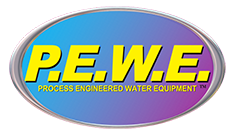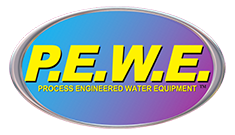 There are many different steps to process wastewater, but one of the most important is using the chemical dosing system. This system involves a chemical feed station delivering a chemical substance into sewage, sludge, and foul water. Pumping systems like these at wastewater treatment plants usually consumes between 10% and 15% of the plant’s energy, making this process a significant part of water treatment systems. Know the purpose of using chemicals in the treatment system and you won’t have any qualms about the idea of injecting chemicals into wastewater.
There are many different steps to process wastewater, but one of the most important is using the chemical dosing system. This system involves a chemical feed station delivering a chemical substance into sewage, sludge, and foul water. Pumping systems like these at wastewater treatment plants usually consumes between 10% and 15% of the plant’s energy, making this process a significant part of water treatment systems. Know the purpose of using chemicals in the treatment system and you won’t have any qualms about the idea of injecting chemicals into wastewater.
Coagulation and Flocculation
Coagulation involves adding chemicals in order to encourage smaller, non-settleable particles to form larger, more settleable or floatable particles. These particles naturally tend to repel each other because of their common electrical charges. This keeps them separate and in constant suspension. Coagulant chemicals, such as calcium hydroxide and magnesium hydroxide, work to neutralize the particles’ electrical charges, destabilizing their suspension.
Flocculation is simply forming even larger particles from the coagulated matter. Typically, the system gently mixes the matter to encourage further contact between the particles. Chemical feed stations typically use synthetic organic polymers for the flocculation process.
Sludge Conditioning and Stabilization
The coagulant and flocculant chemicals also help to condition sludge. These chemicals give off electrostatic charges that join together separate sludge particles. By joining together, the particles release water contained in the sludge and leave behind a more concentrated sludge mass.
While sludge conditioning is important for successful dewatering, sludge stabilization works to lower the possibility of sludge going through further biological decomposition. This decomposition is typically what produces the offensive odors in wastewater treatment. Chemical feed stations can add chemicals that put a stop to that biological activity, stabilizing the sludge. Treatment systems will often use lime to stabilize the particles.
Disinfection and Nutrient Removal
Before treated wastewater is discharged to the receiving stream, water treatment products add chemicals to inactivate any pathogens in the water. This step is crucial for maintaining the health of whoever uses this water. Typically, systems disinfect wastewater by using bromine, chlorine gas, sodium hypochlorite, or ozone.
While nutrients may sound like a good element to have in water, systems need to add chemicals to remove harmful nutrients before the wastewater discharges to the receiving stream. Phosphorus is a nutrient that systems typically work to remove through chemicals like aluminum or iron salts. These chemicals react with the phosphorus to create a new compound that settles out and is removed with waste sludge.
Adding chemicals to wastewater is crucial in maintaining a healthy water supply. Without the addition of chemicals, wastewater treatment would not be at the advanced stages it is at today.



